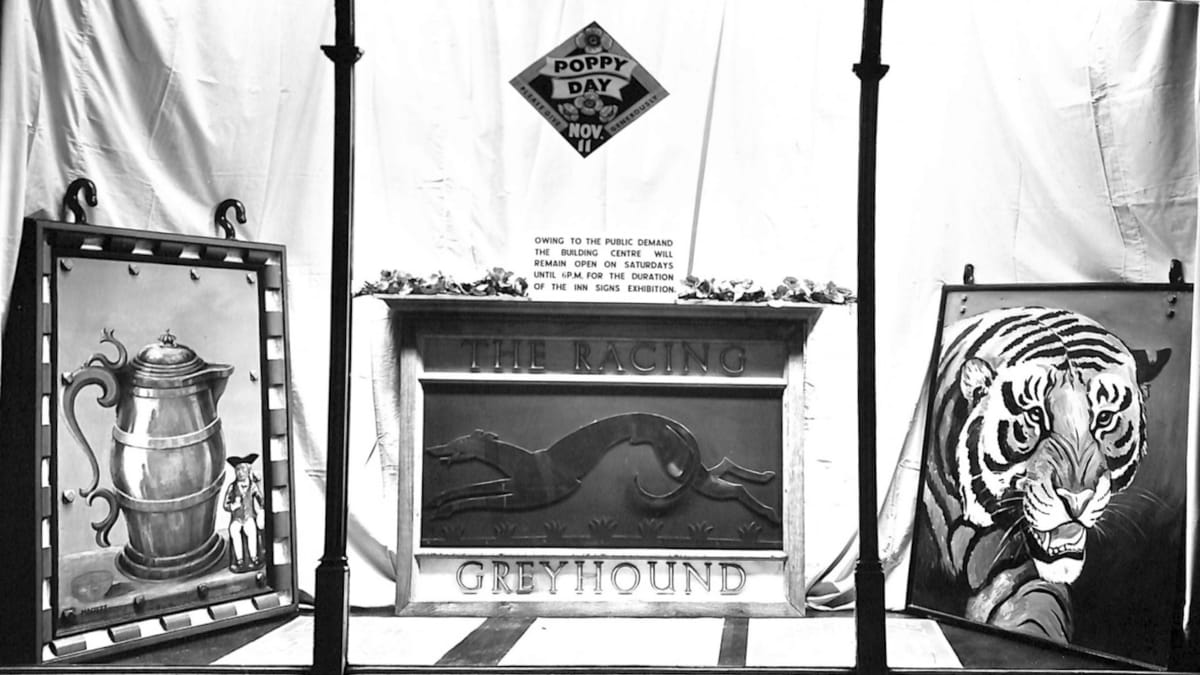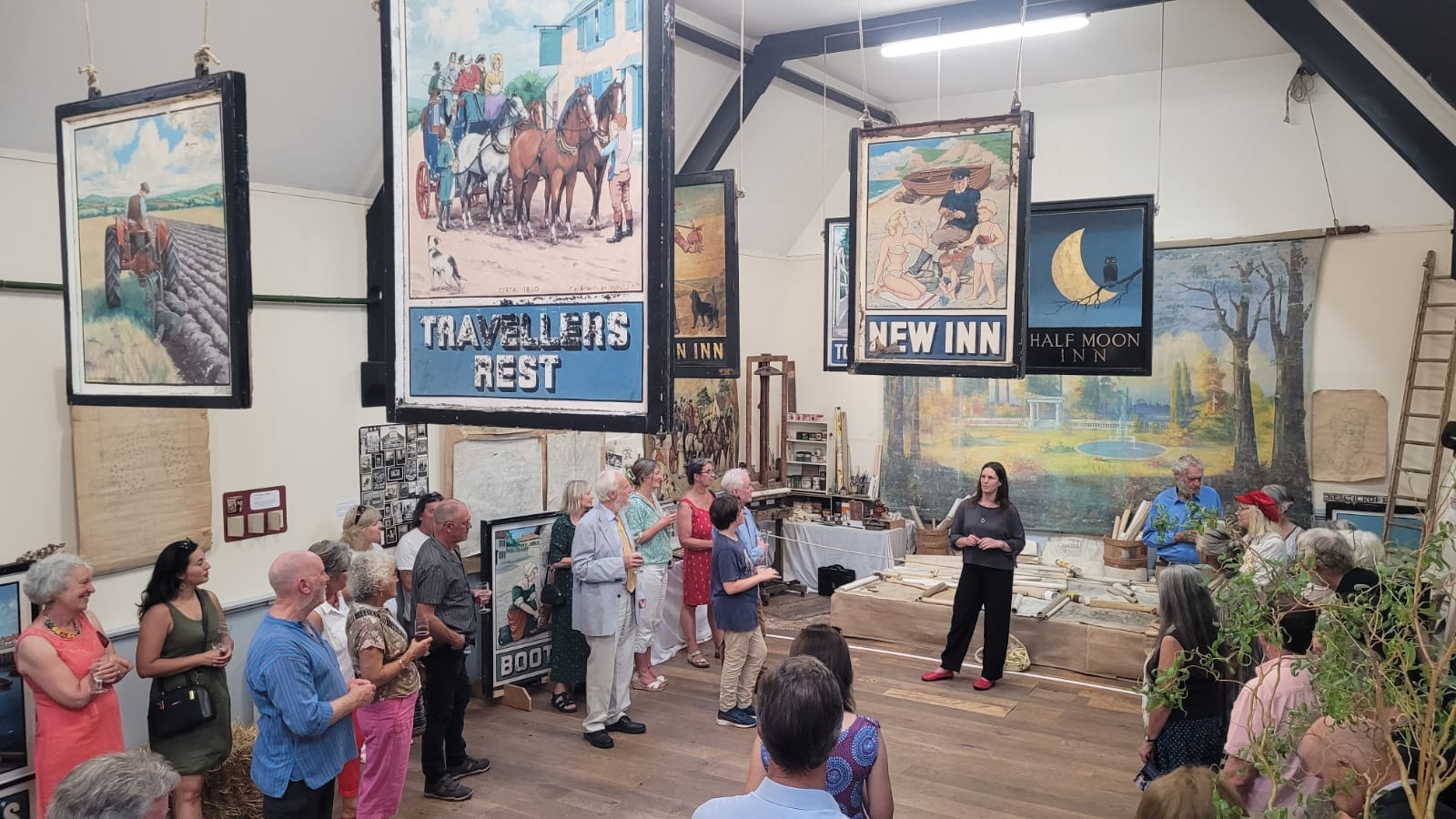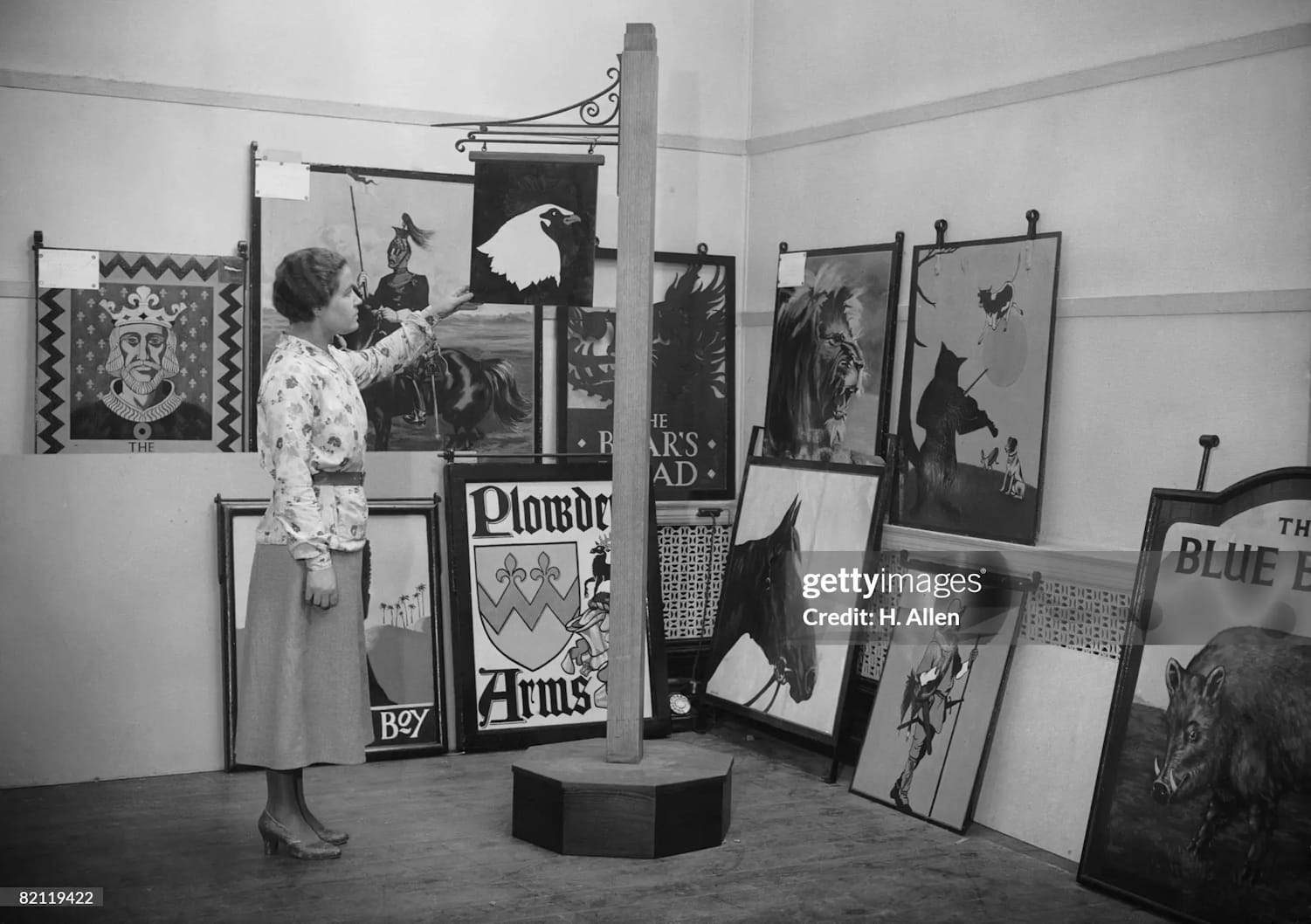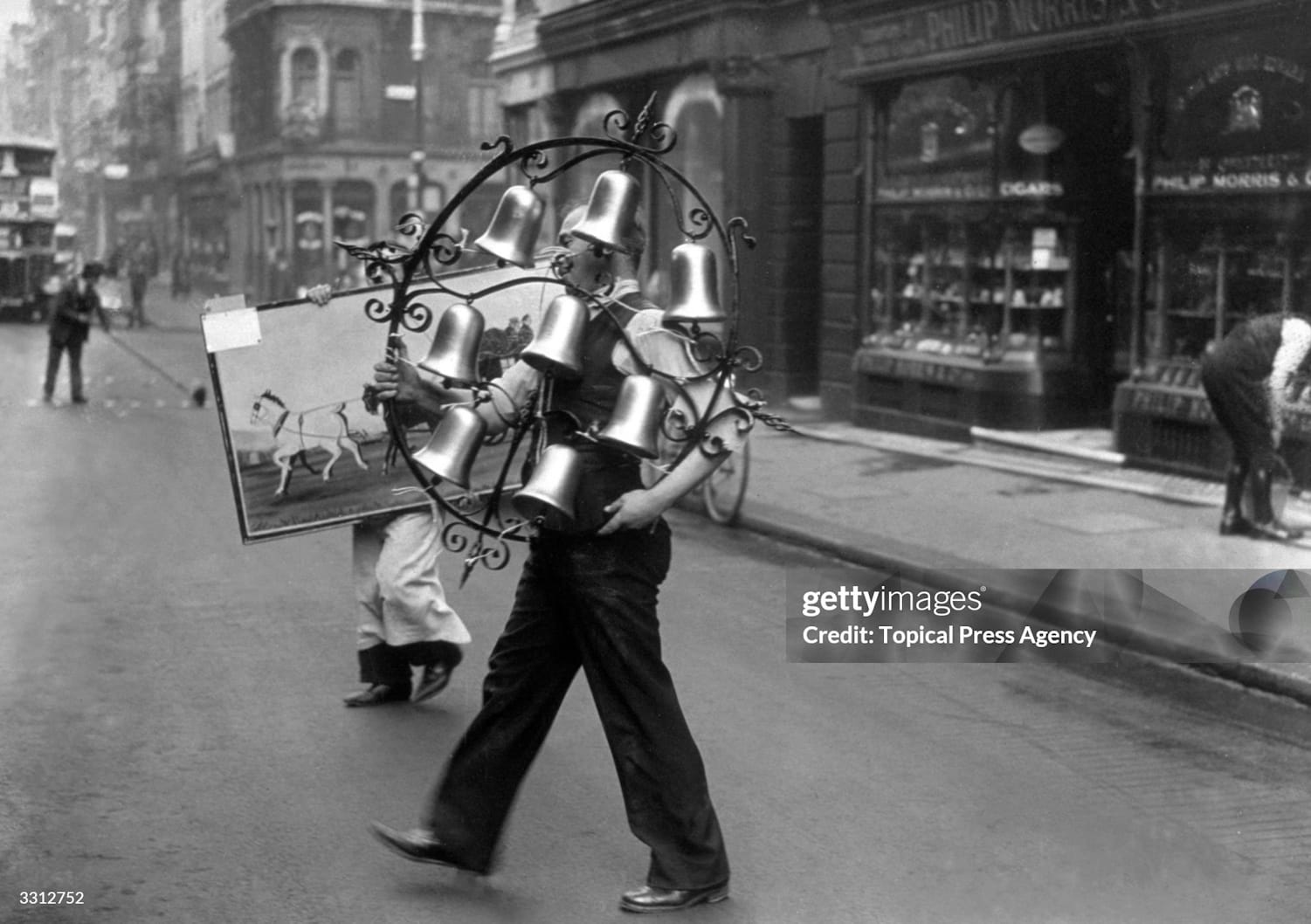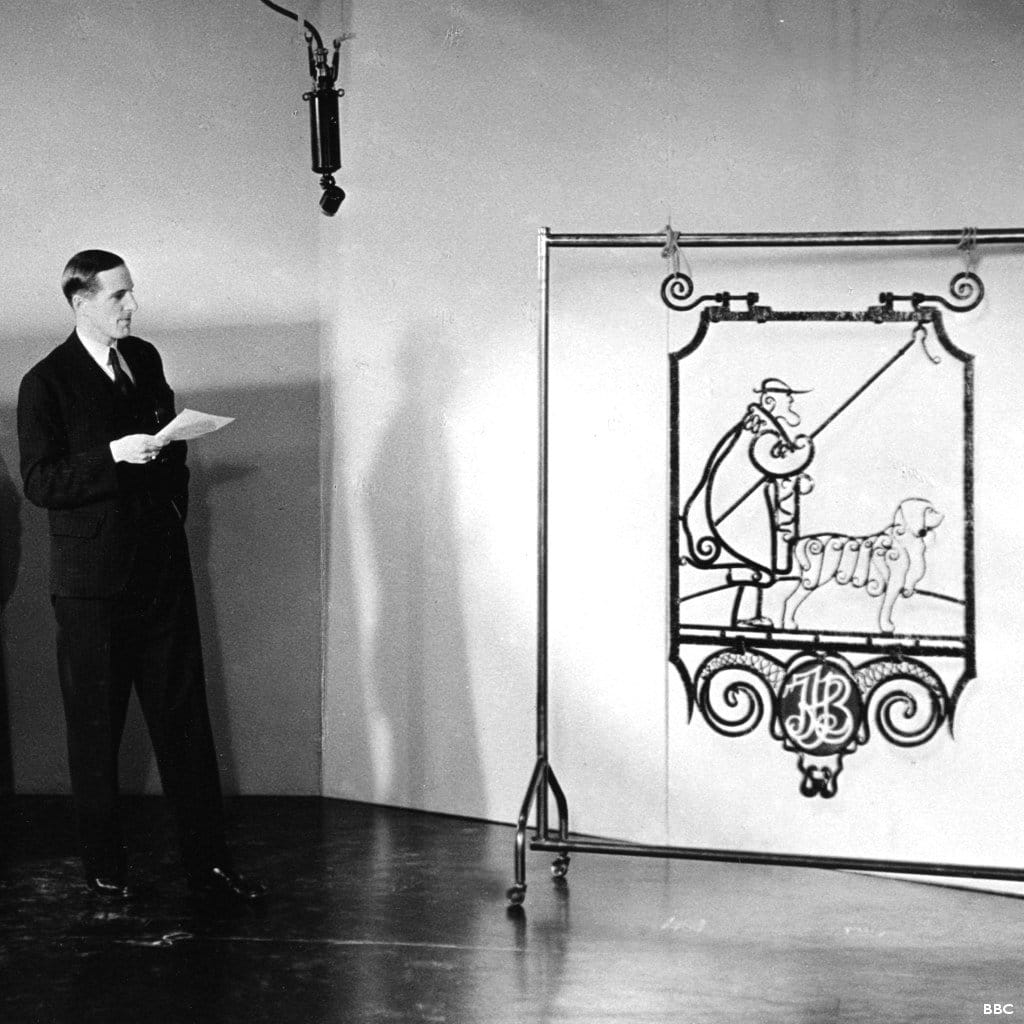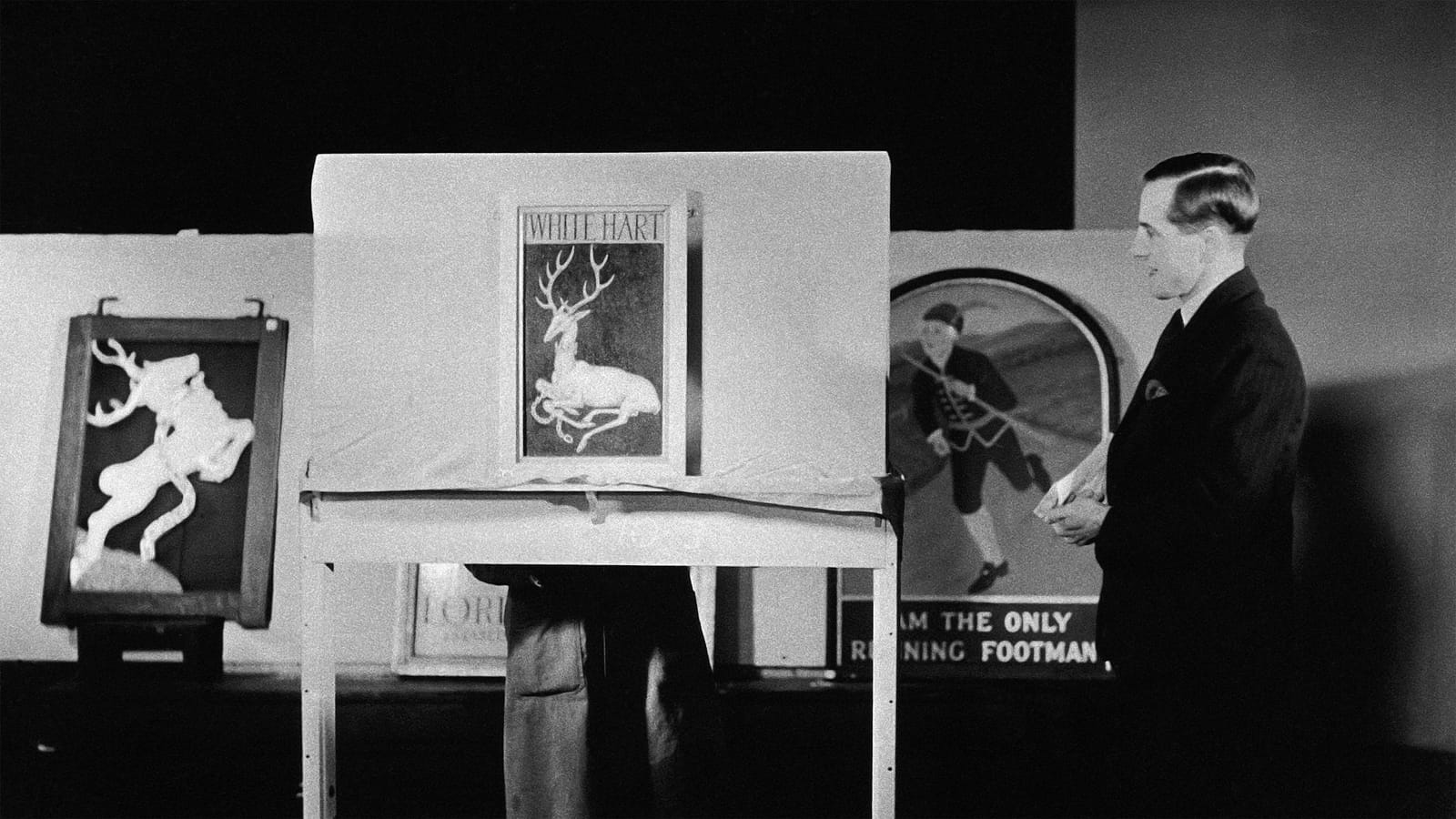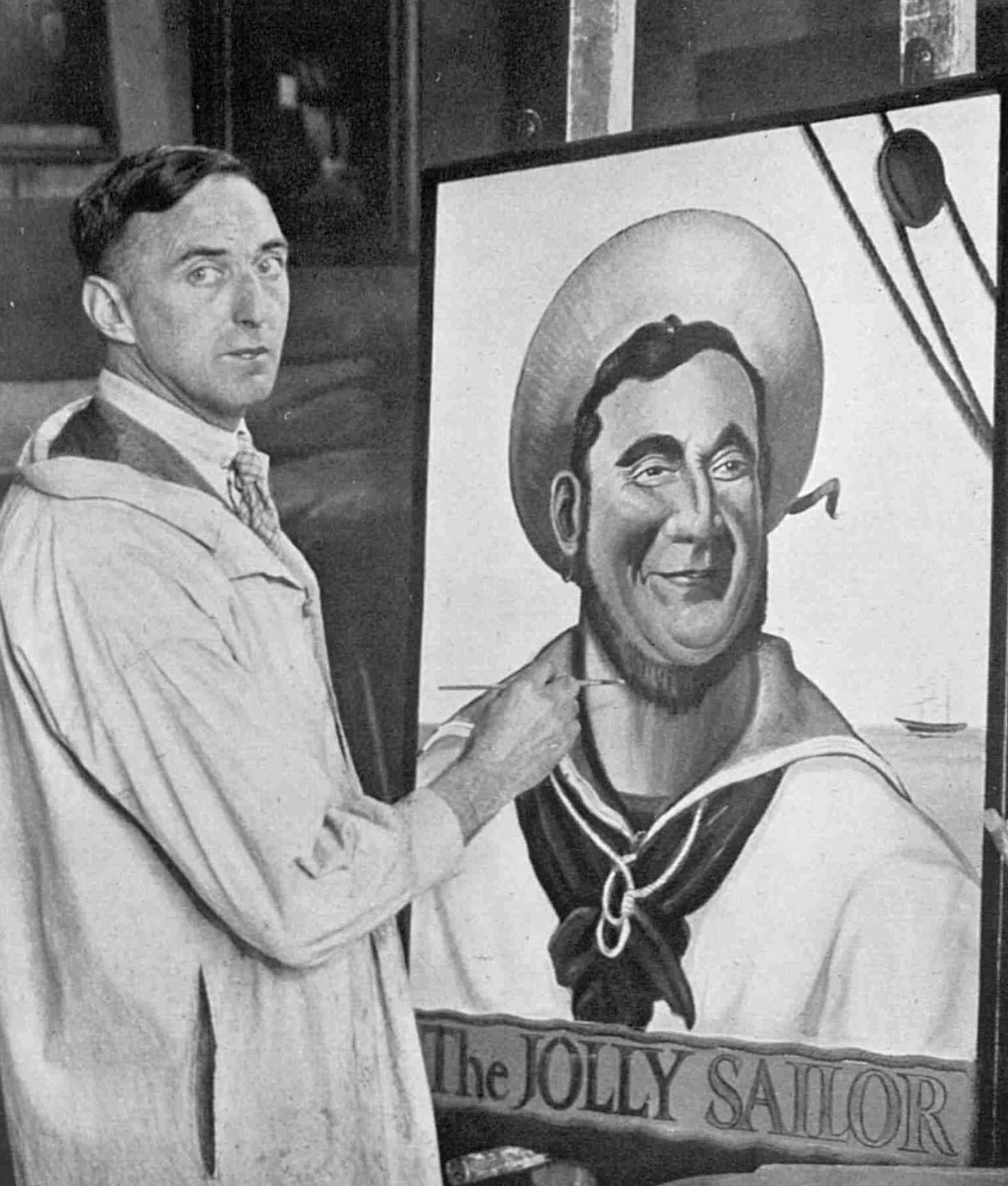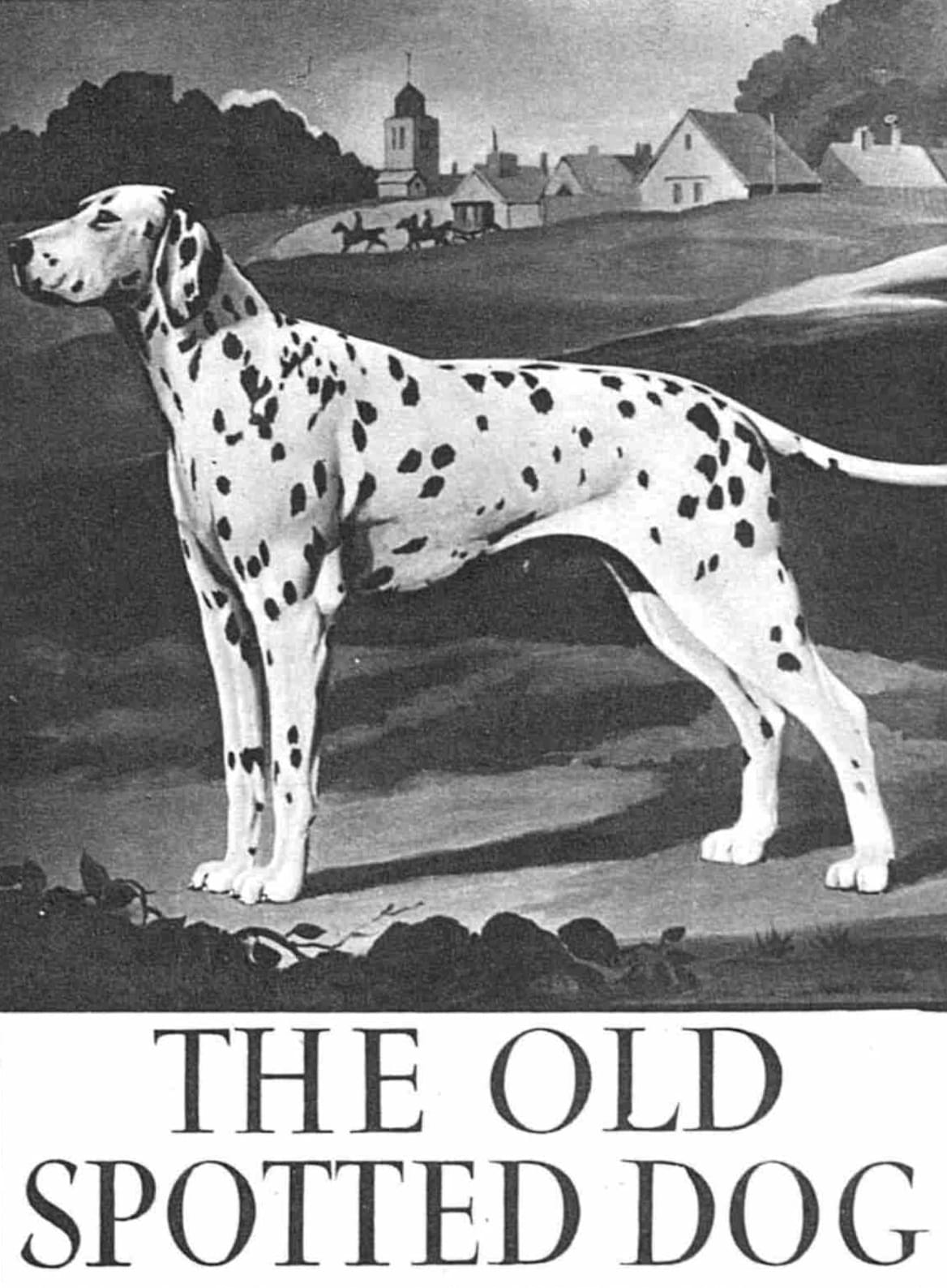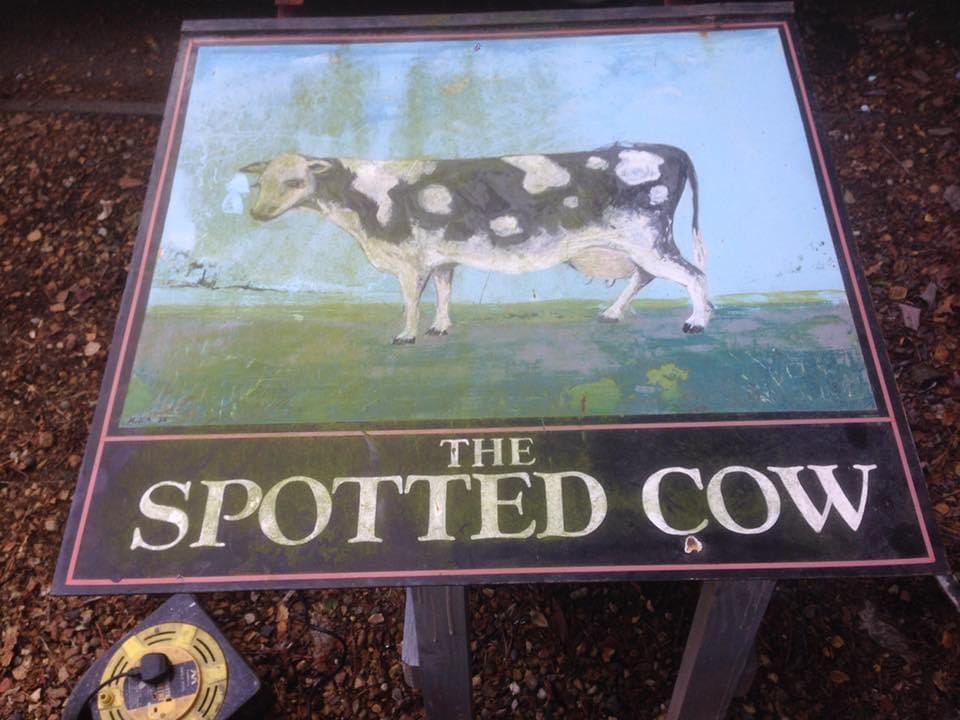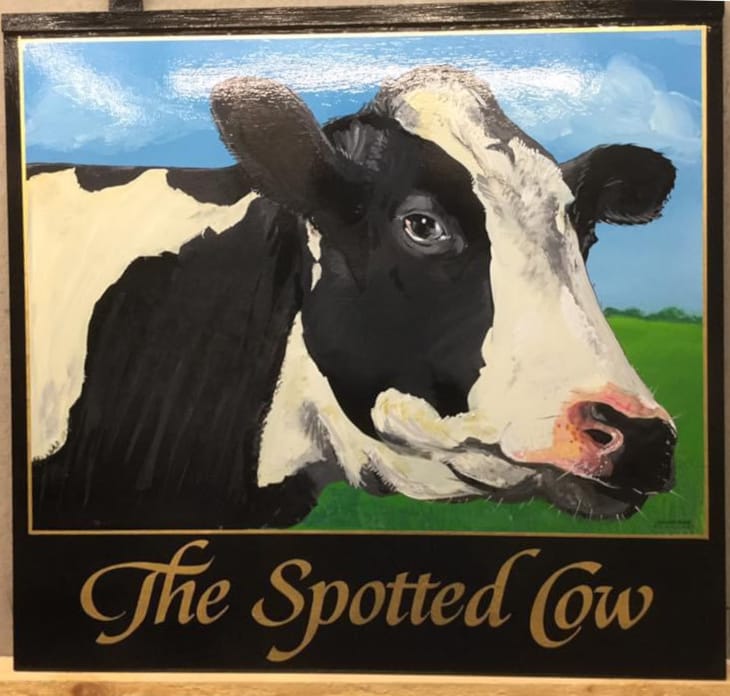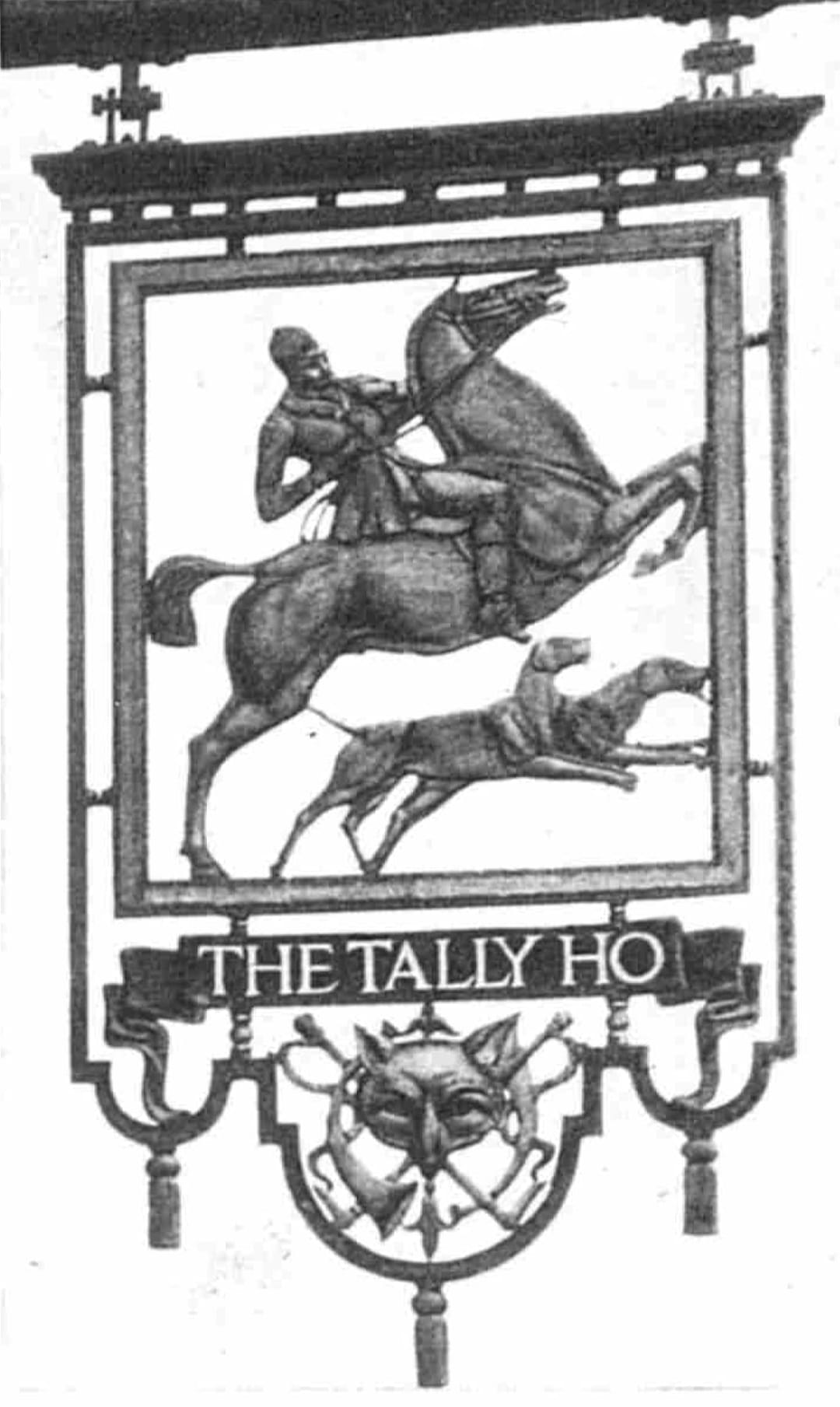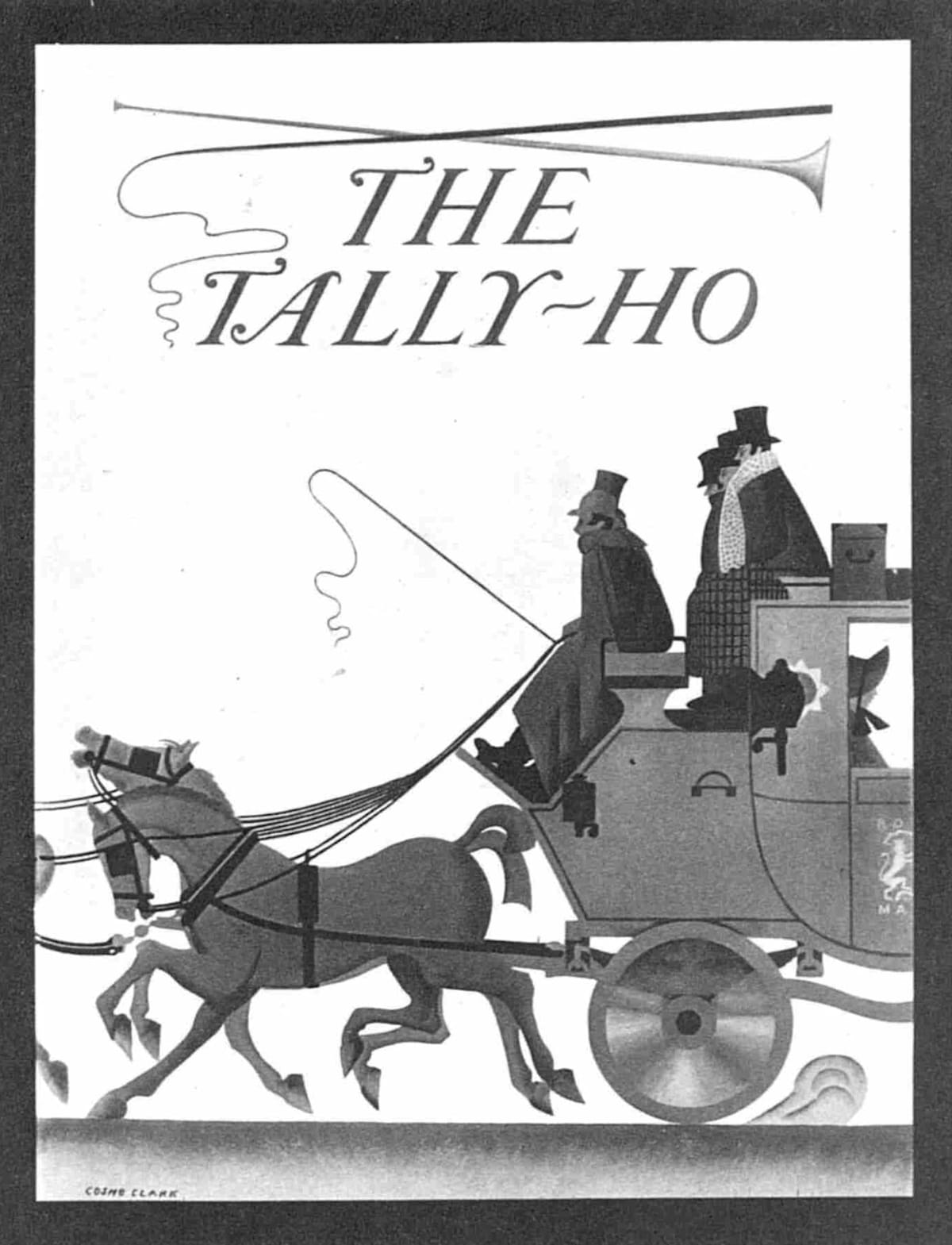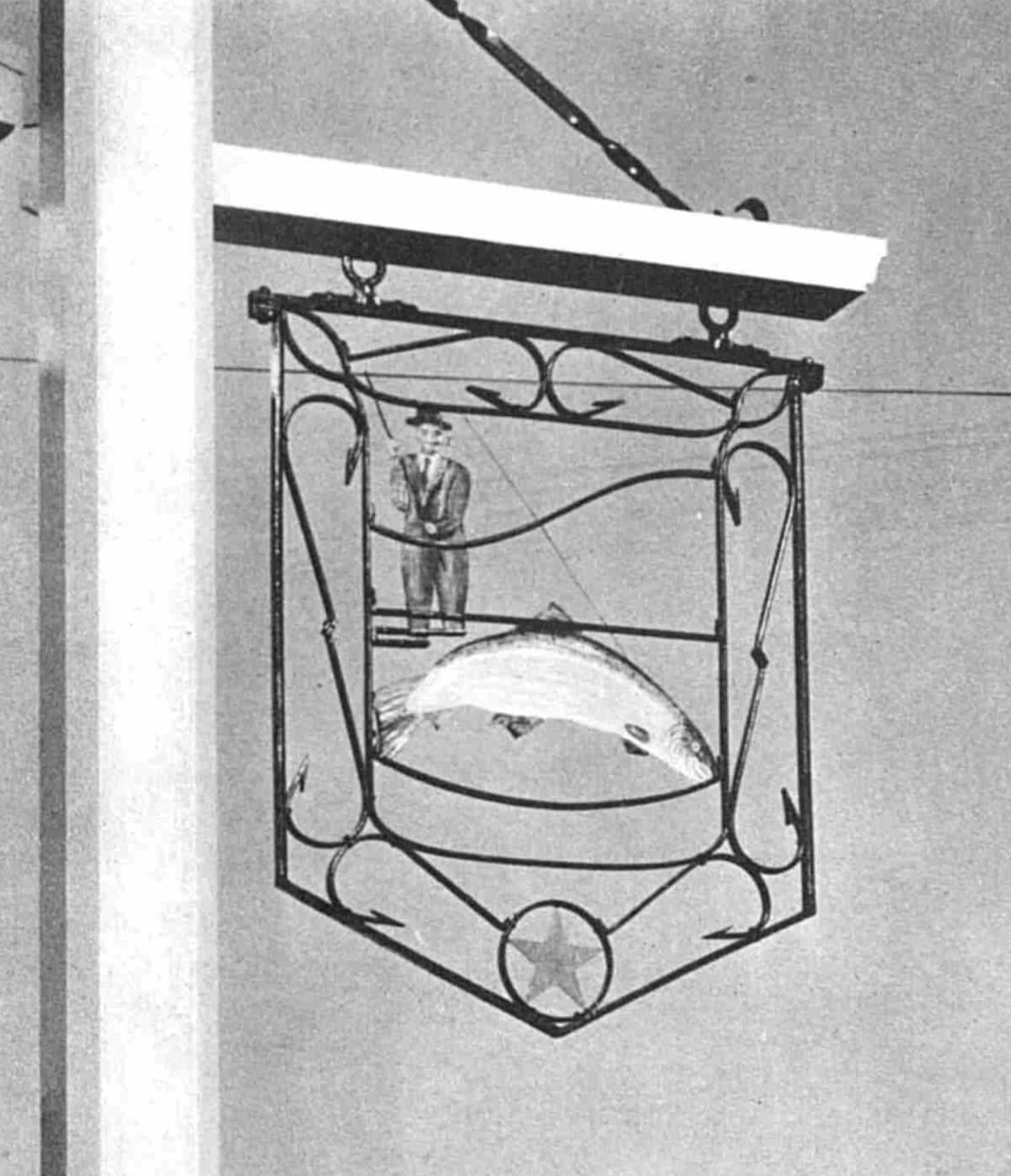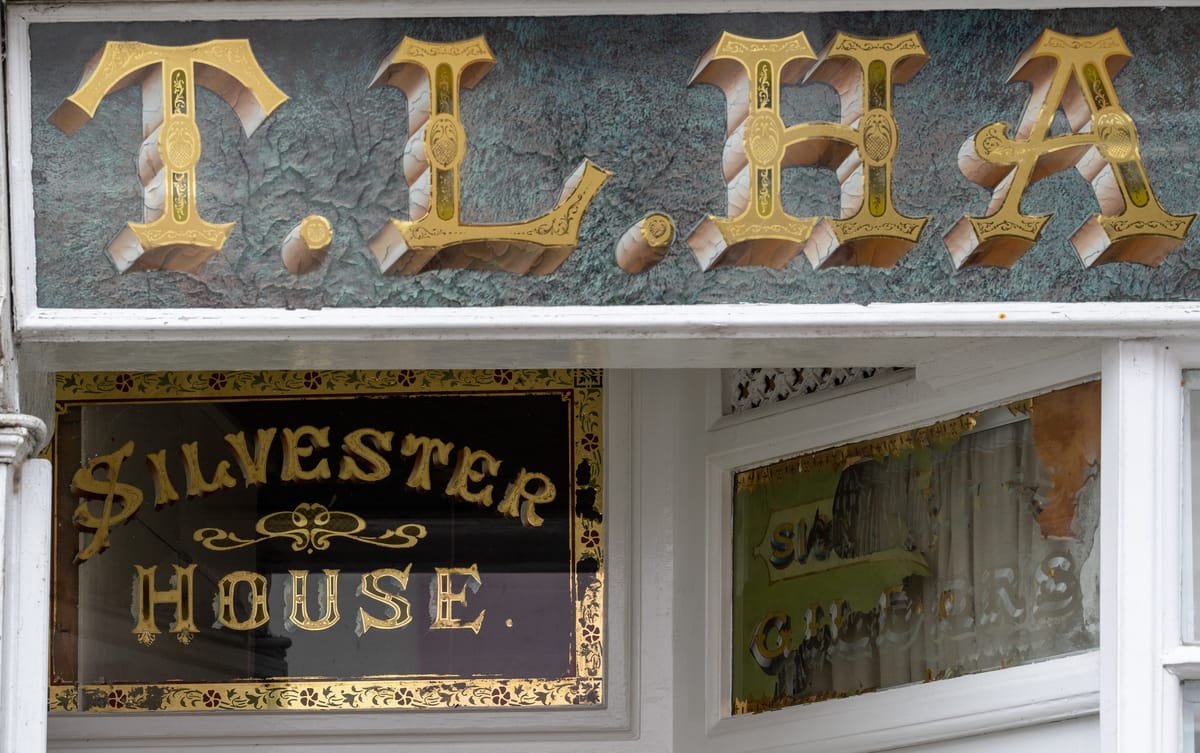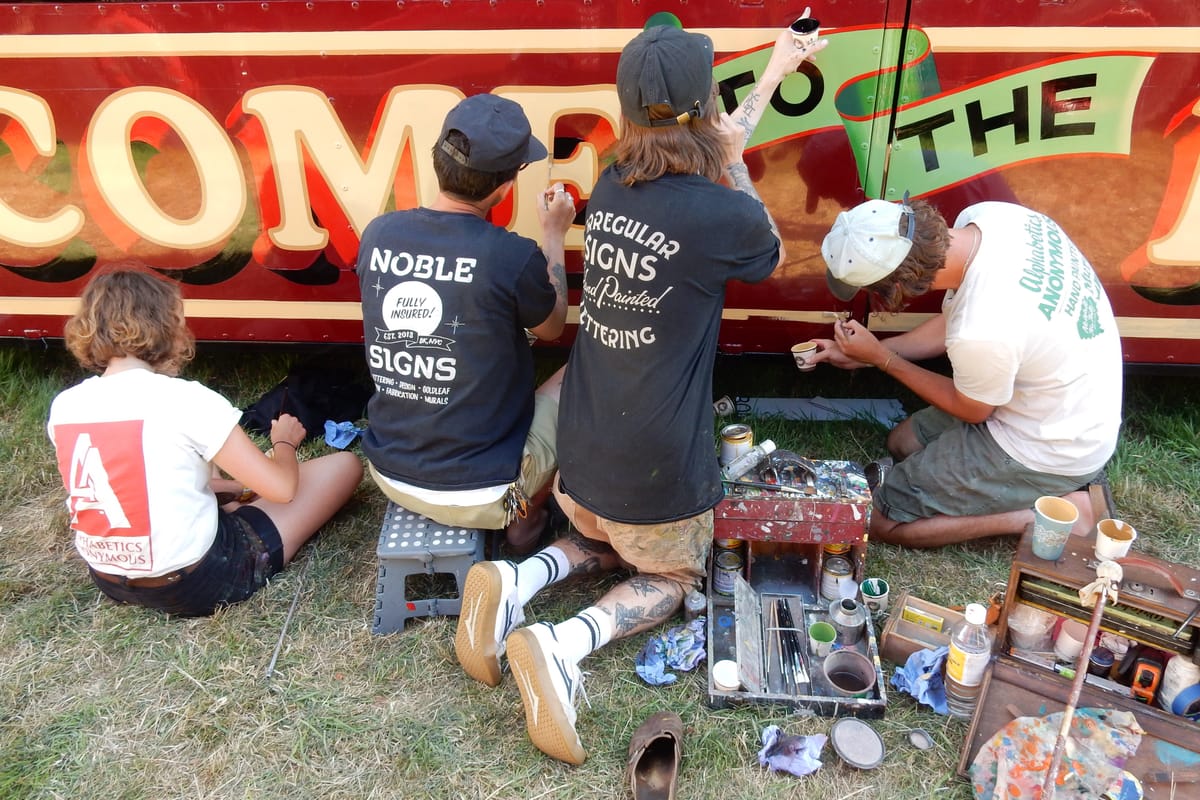|
After sitting on it for more than two years, I'm finally publishing this material to coincide with yesterdays's opening of the George Biles show in Bridport. While Biles' work for the Palmers brewery didn't feature at the Inn Signs Exhibition of 1936, he was a contemporary of many of the painters that you'll read about below. And the current show, which opened yesterday, has some visual similarities to what came before. NB. This is a long article, and may be better viewed in your browser.
In November 1936, the Building Centre hosted an exhibition of inn signs, sign designs, and lettering at their central London premises. Six galleries displayed more than 400 artefacts, and over 250 of these were actual signs taken down and transported to London for the show. Hanging the exhibition, and transporting the signs on New Bond Street in central London. Photos: 82119422 (H. Allen) and 3312752 (Topical Press Agency) at Getty Images. Raising the BarThe exhibition was dubbed 'The Brewers' Academy' by the Daily Express, in a nod to the prestigious Royal Academy of Arts, whose president, Sir William Llewellyn, opened the show. This represented a change in fortunes for the artform following the 1762 Grand Exhibition of the Society of Sign Painters. William Hogarth, believed to have been involved in that earlier show, was among the artists whose work was on display nearly 175 years later. 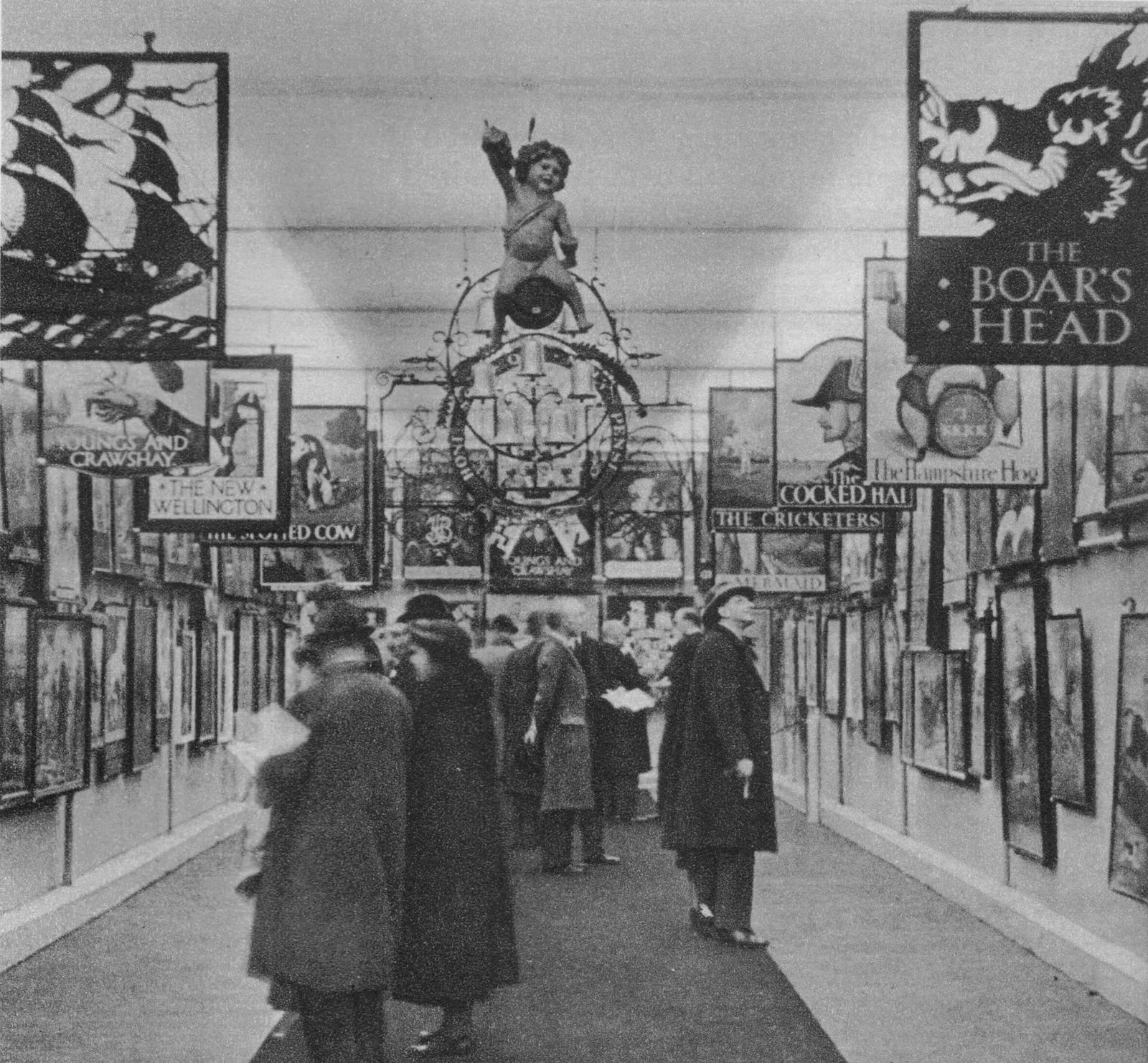 Visitors taking in the inn signs in one of the main galleries at the Building Centre in London, November 1936. The photos appears in the 1948 book, Inn-Signia from the Whitbread & Co. brewing company. Numerous distinguished individuals from the fields of architecture, art, brewing, conservation, and lettering made up the orgnising committee, and series of lectures were scheduled to coincide with the show. These were delivered by experts in ironwork, decorative arts and, in the case of Percy J. Smith, lettering and typography. 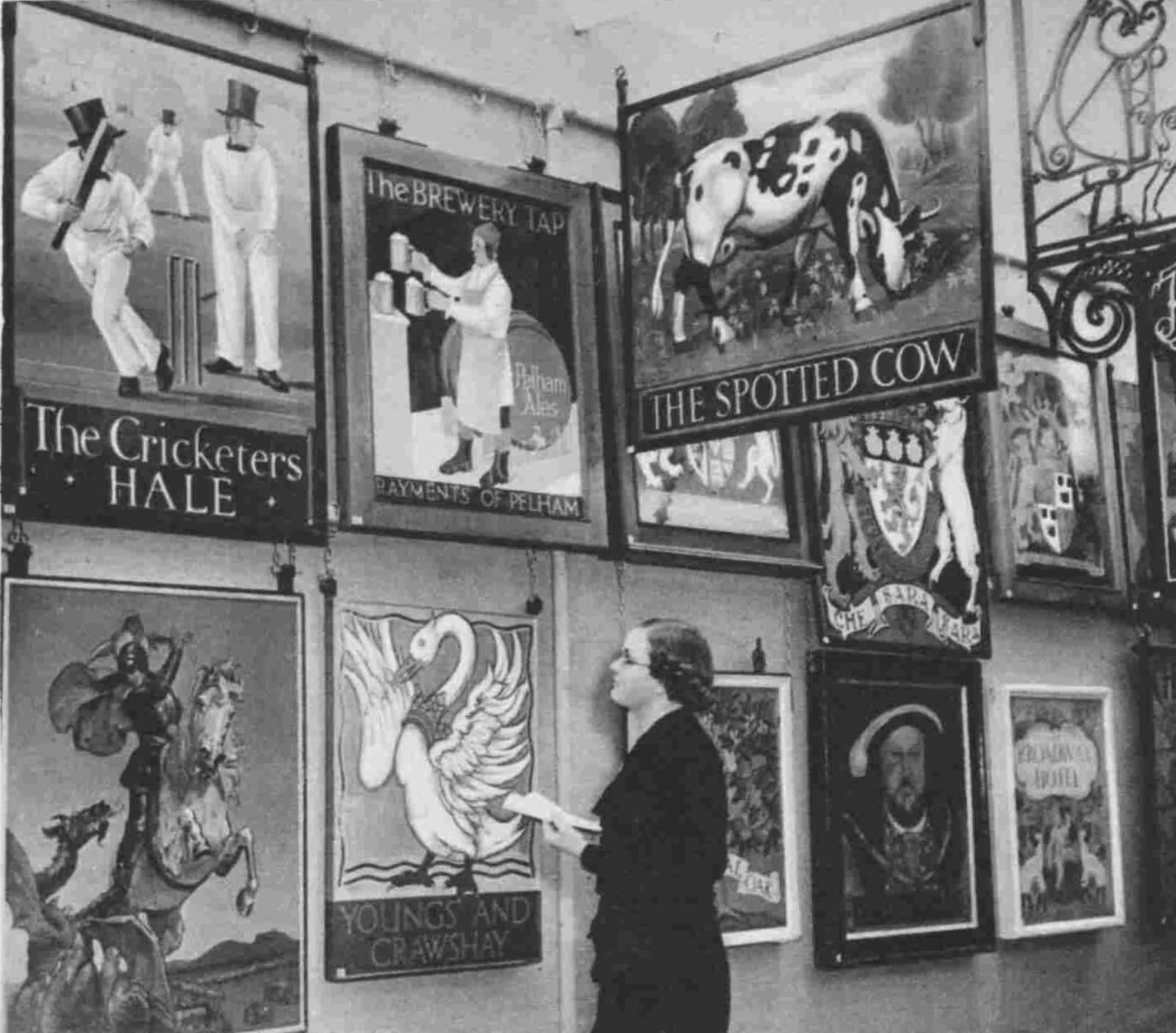 The sheer volume of work meant that every available space was utilised to display the signs. Inn the NewsThe exhibition was picked up by local and national press, and a short documentary film was broadcast by the BBC. "This is the first time within living memory that an exhibition of this kind has been held. In all, there are over two hundred inn signs on show. Some are old—there is one that creaked in the wind way back in the reign of Charles II—and some are modern. Amongst the latter there are some particularly fine examples of a happy blend of commerce and art. All these signs have been taken down specially for this exhibition." — Radio Times
The IMDB claims that Inn Signs Through the Ages was "the first programme reviewing an art exhibition and the first programme about graphic design publicly broadcast on television in the United Kingdom". Although the film cannot be seen, these stills survive. Fred Taylor presenting the 20-minute BBC documentary Inn Signs Through the Ages. The ArtistsAlthough George Biles isn't one of the scores of painters whose work was shown, there are some artists that featured prominently. These included E.M. Dinkel with 26 pieces, and S.L. Webster with 19 in total. 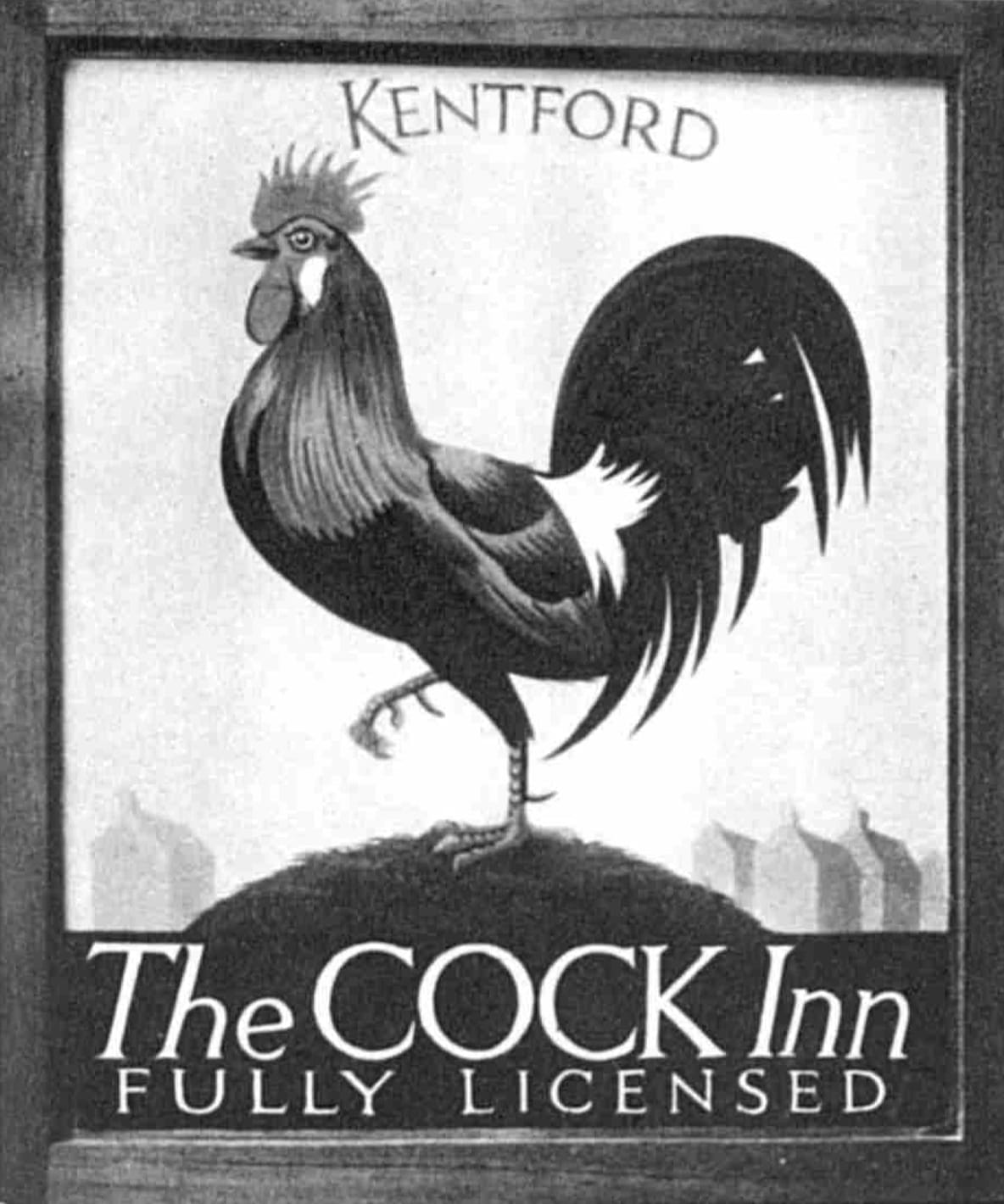 E.M. Dinkel painted this sign for The Cock Inn in Kentford. But it is Ralph Ellis that stands out, with over 50 signs and designs to his name. Ralph Ellis on the brush in 1934 for a photo feature in The Bystander magazine, and one of his signs for The Old Spotted Dog in Neasden.. The CatalogueA 68-page catalogue was published to accompany the exhibition, containing a full list of the signs, locations, creators (where known), and crediting those that lent them for display. Much of this detailed information would have come from the brewers, who were responsible for commissioning the majority of the original signs, and facilitating their inclusion in the exhibition. The catalogue pictured just 11 of the signs from the exhibition, each of which is shown below with the correponding information from the listings. 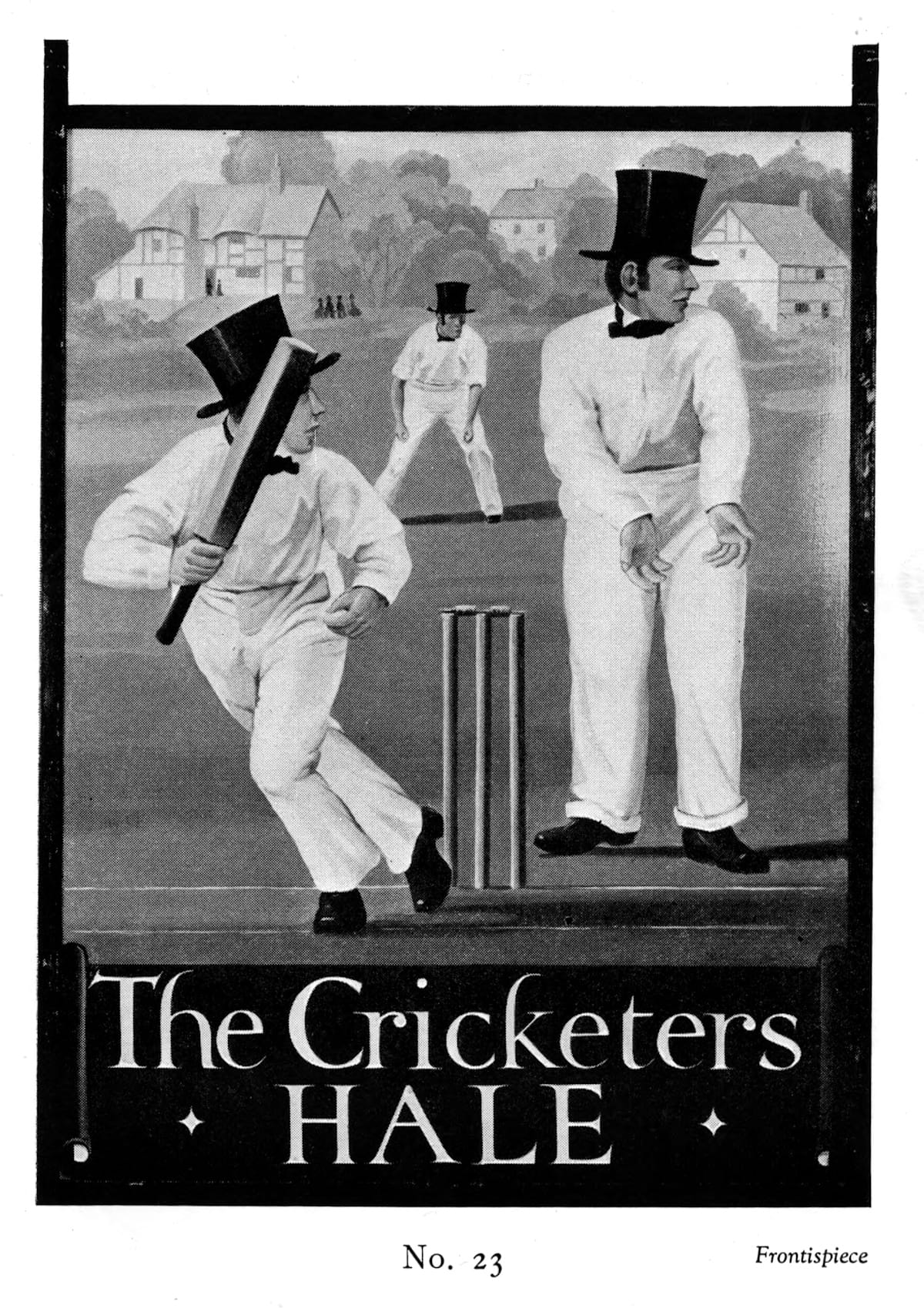 23. The Cricketers, Hale, Surrey. Artist: Ralph Ellis. Lent by Watney, Combe, Reid & Co. Ltd., London. 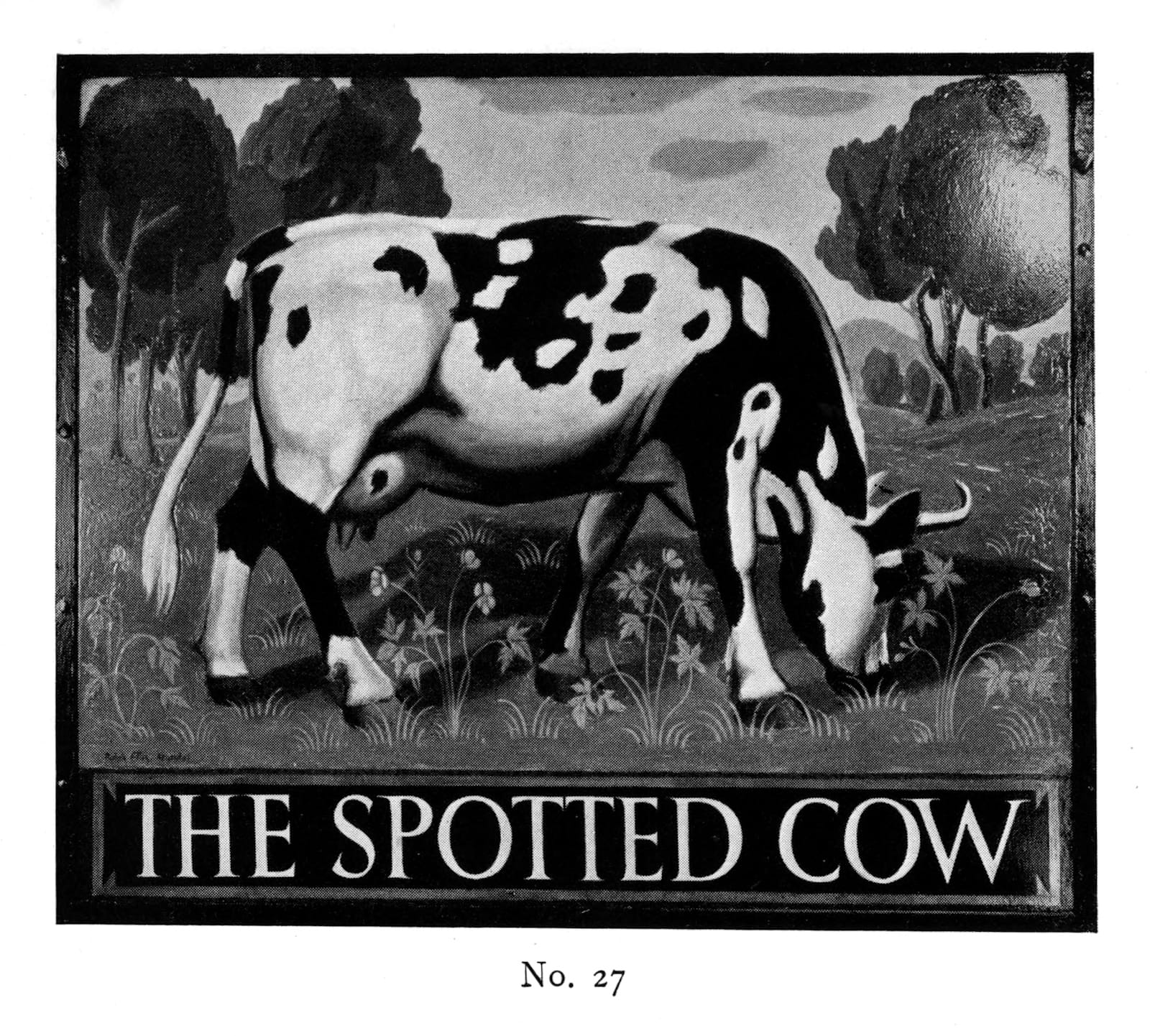 27. The Spotted Cow, Littlehampton, Sussex. Artist: Ralph Ellis. Lent by Henty & Constable (Brewers) Ltd., Chichester.
Wayne Osborne recently painted the latest iteration of The Spotted Cow's hanging sign. This is a before and after showing his reinterpretation of the bovine theme. Before and after: Wayne Osborne's recent work for the pub that once hung Ralph Ellis' sign.
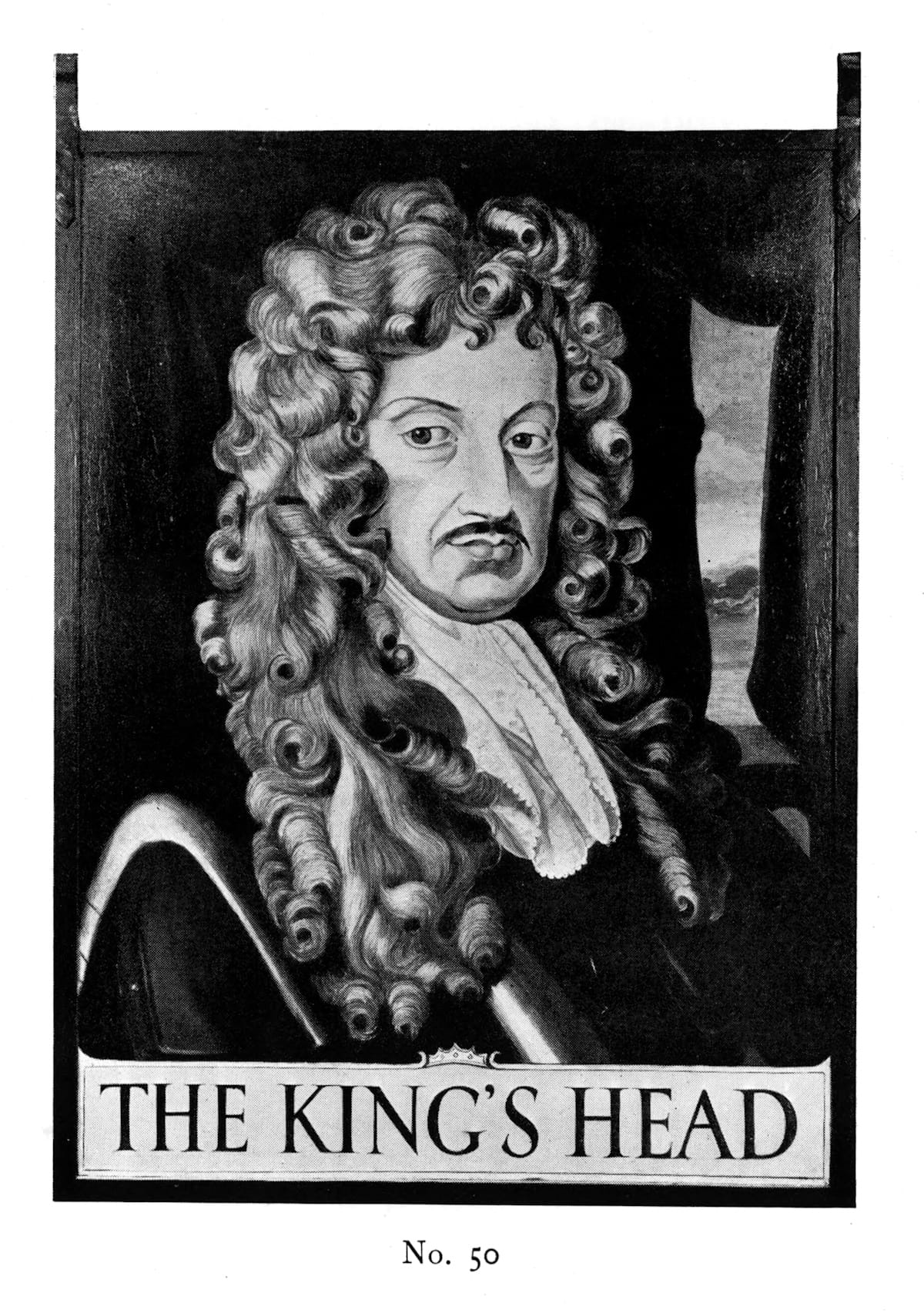 50. The King's Head, Richmond, Yorks. Artist: Ralph Ellis. Lent by The Richmond (Yorks) Hotel Co., Ltd., Richmond. 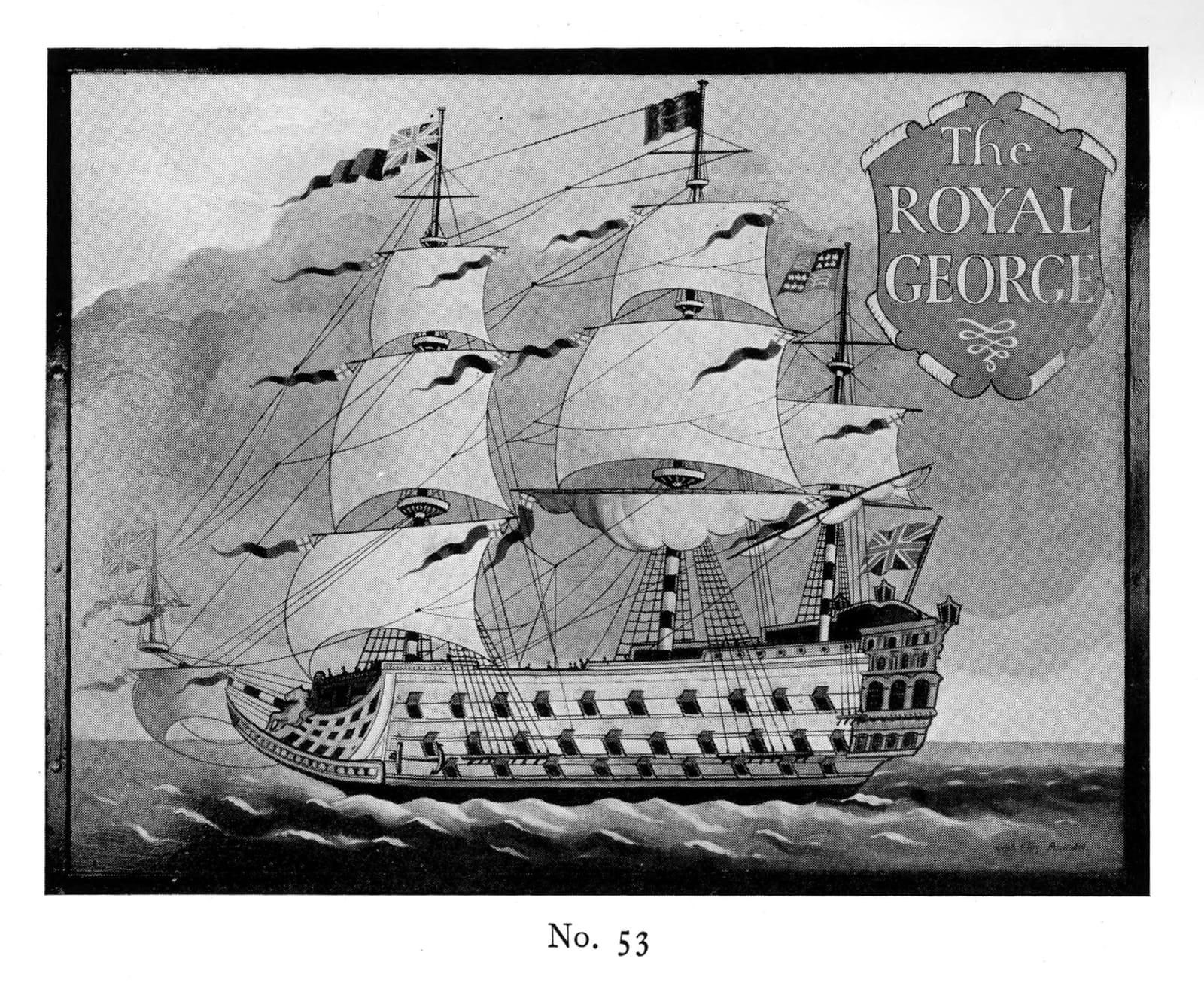 53. The Royal George, Worthing. Artist: Ralph Ellis. Lent by Henty & Constable (Brewers) Ltd., Chichester. 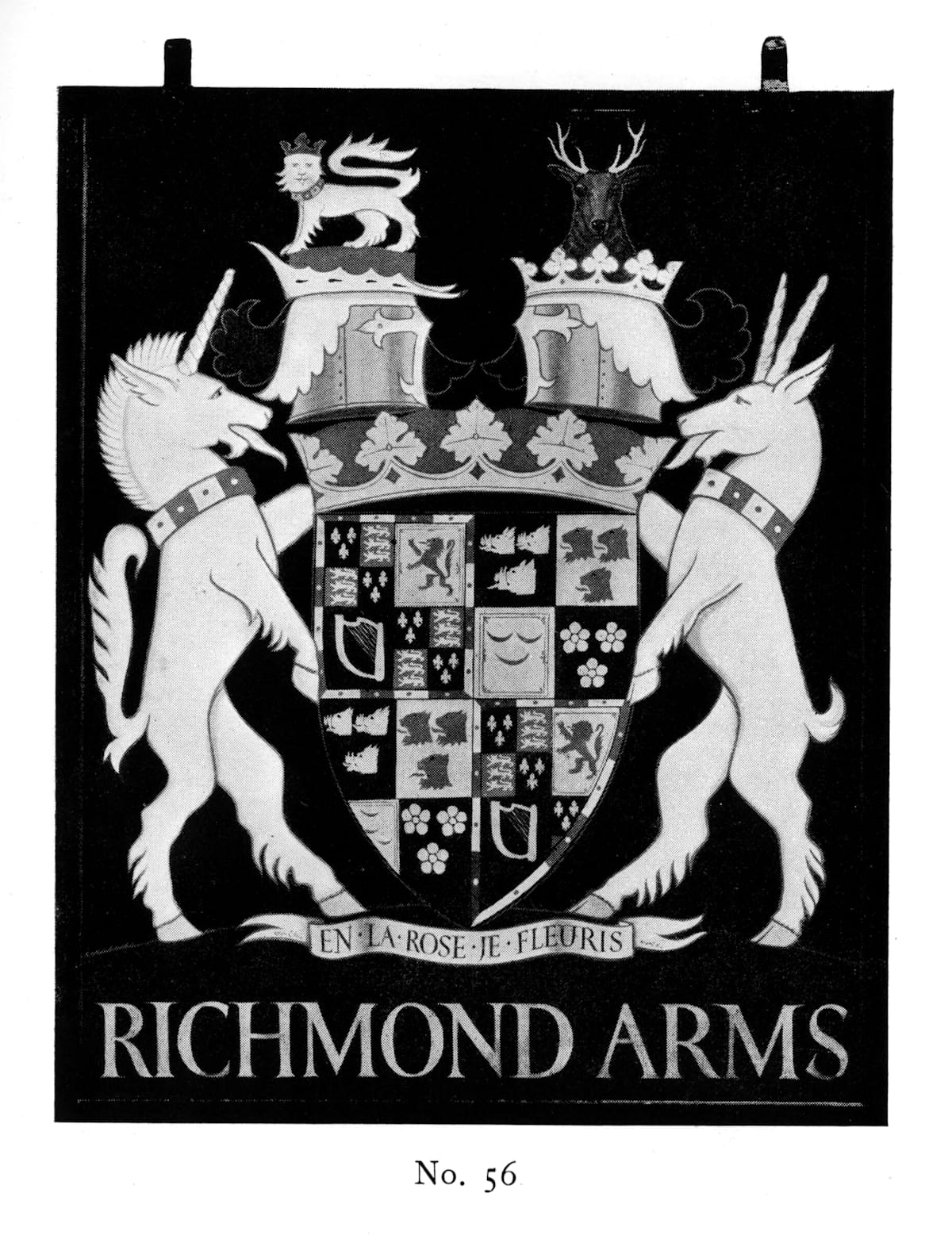 56. The Richmond Arms, Chichester. Artist: Ralph Ellis. Lent by Henty & Constable (Brewers) Ltd., Chichester. 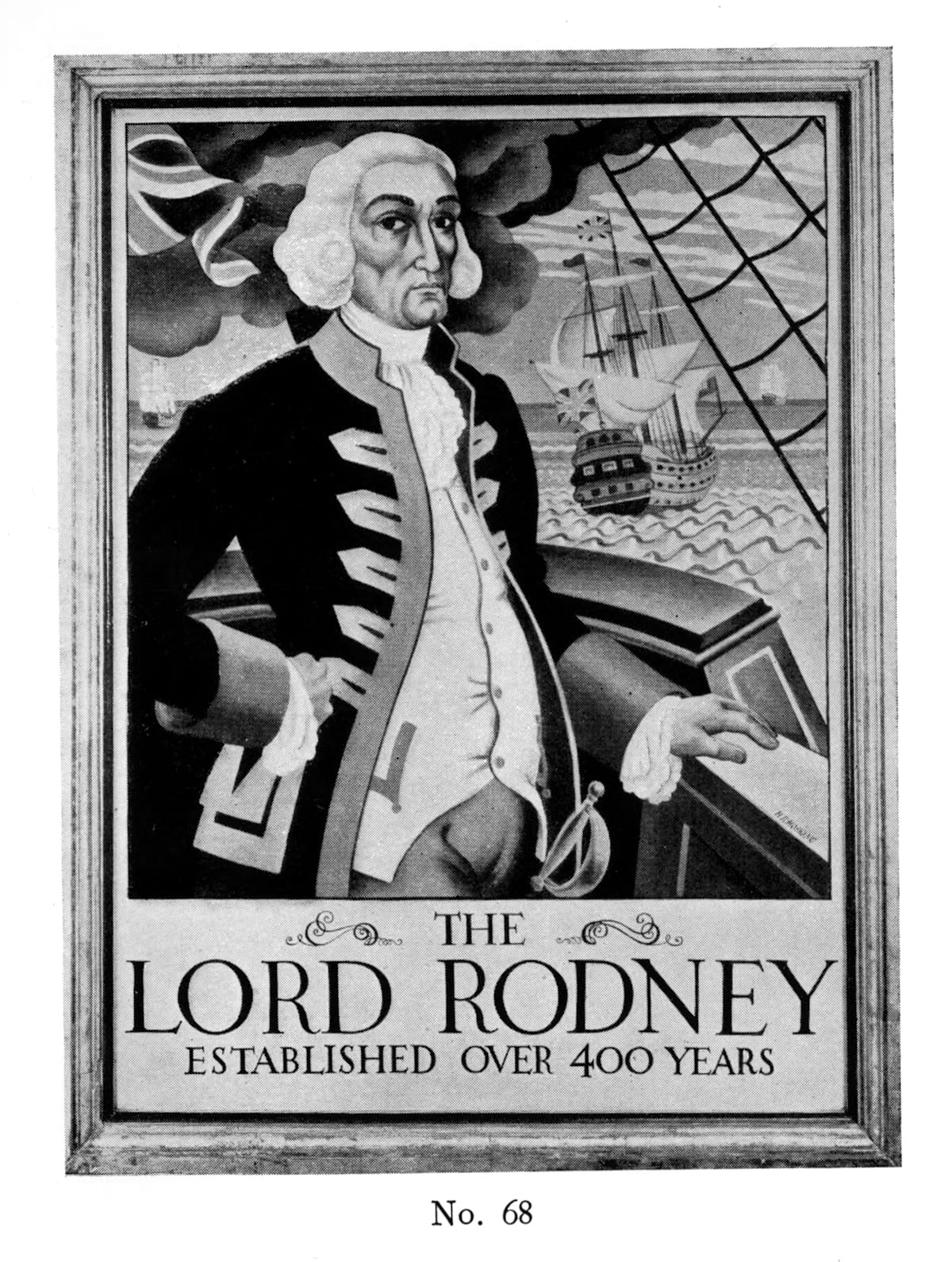 68. The Lord Rodney, Bradford. Artist: H.R. Hosking. Lent by Lund & Reynolds, Ltd., Bradford. 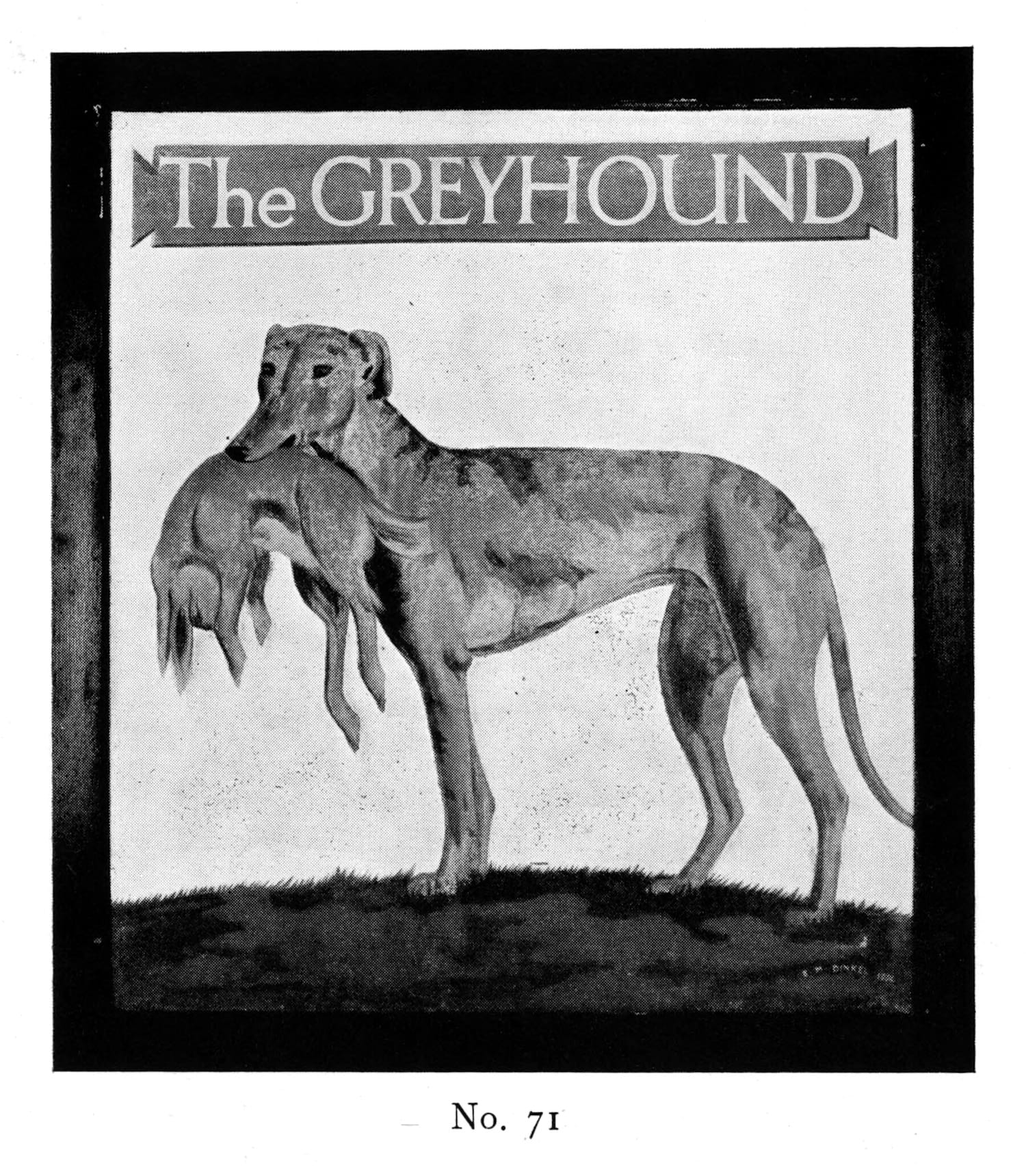 The Greyhound Inn, Cotehill, Carlisle. Artist: E.M. Dinkel. Lent The Carlisle District and State Management Scheme. 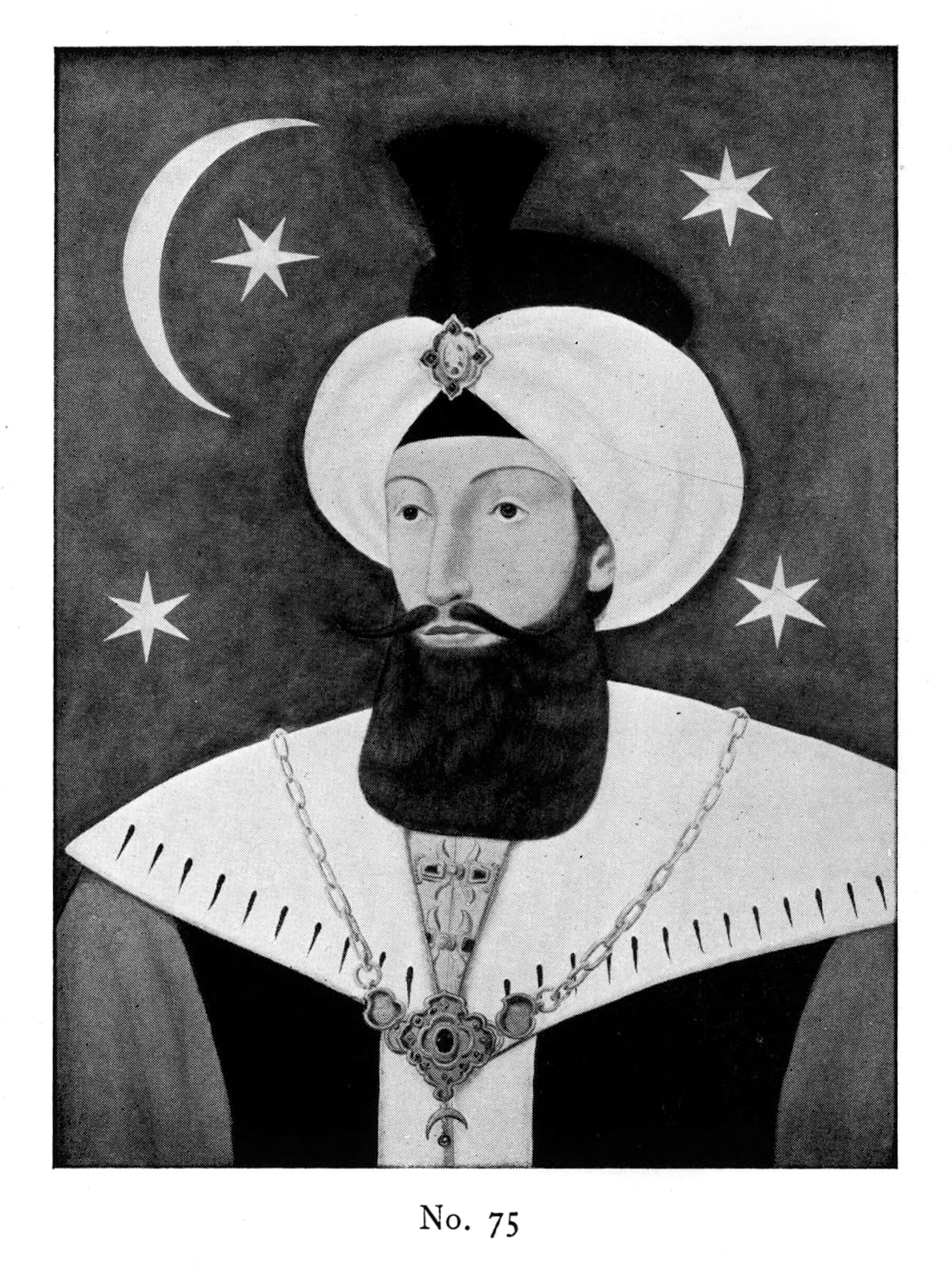 75. The Sultan, Waltham Abbey, Herts. Artist: Unknown, after L.S. Lee. Lent by Whitbread & Co., Ltd., London. 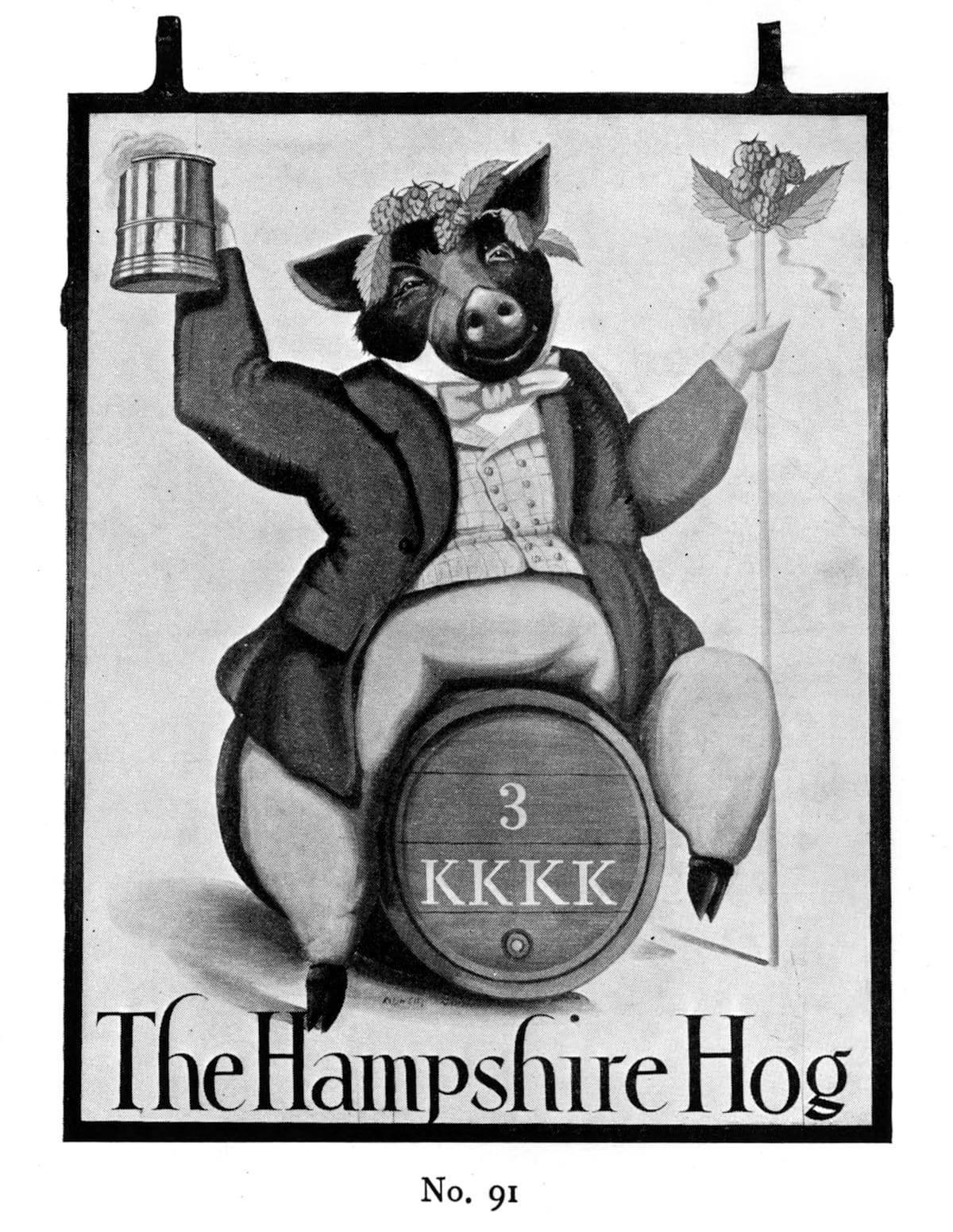 91. The Hampshire Hog, Hammersmith, London. Artist: Ralph Ellis. Lent by Watney, Combe, Reid & Co. Ltd., London. 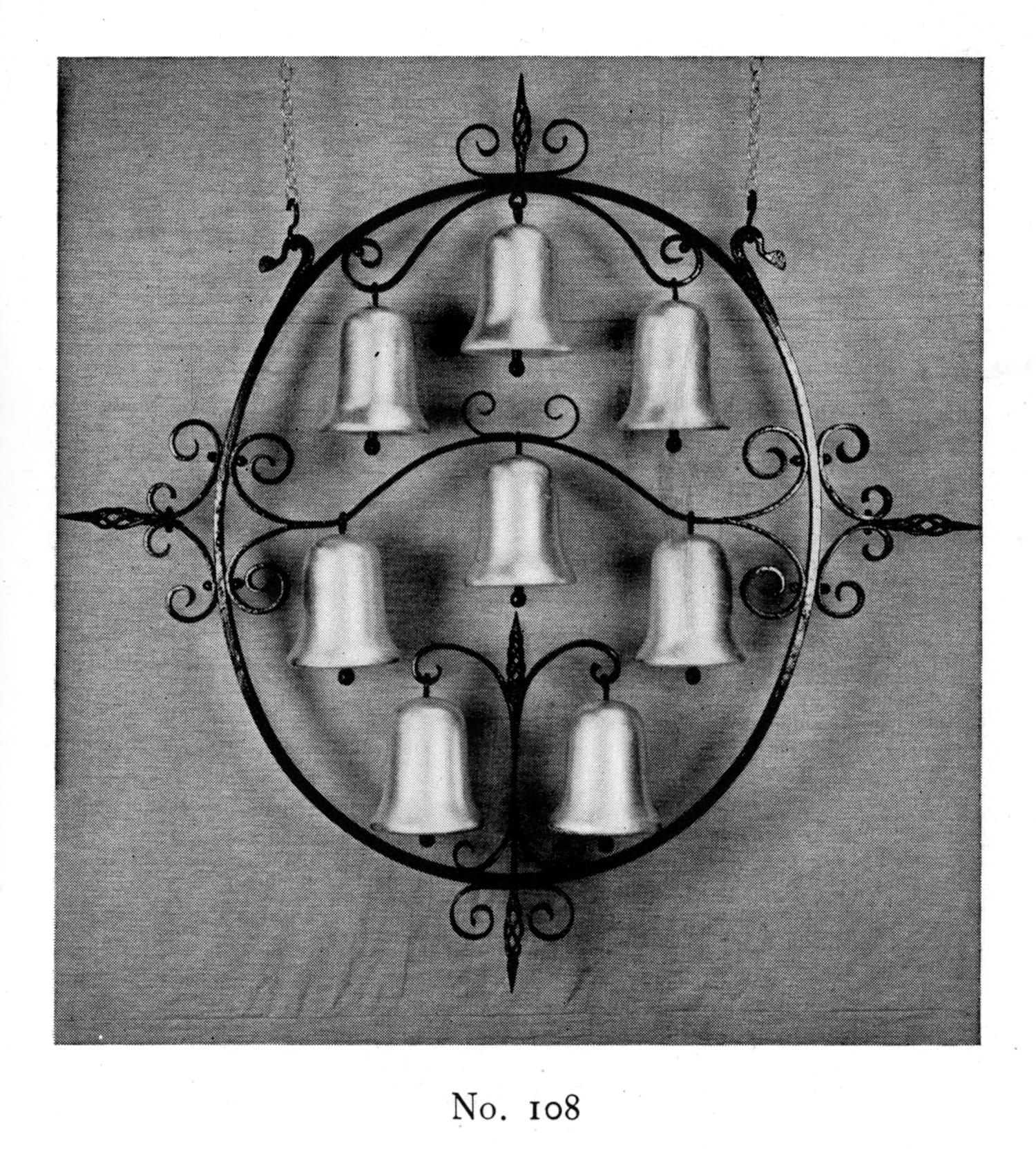 108. The Eight Bells, Watford. Designed by Col. Healey. Lent by Benskin’s Watford Brewery, Watrorp Brewery, Ltd., Watford. 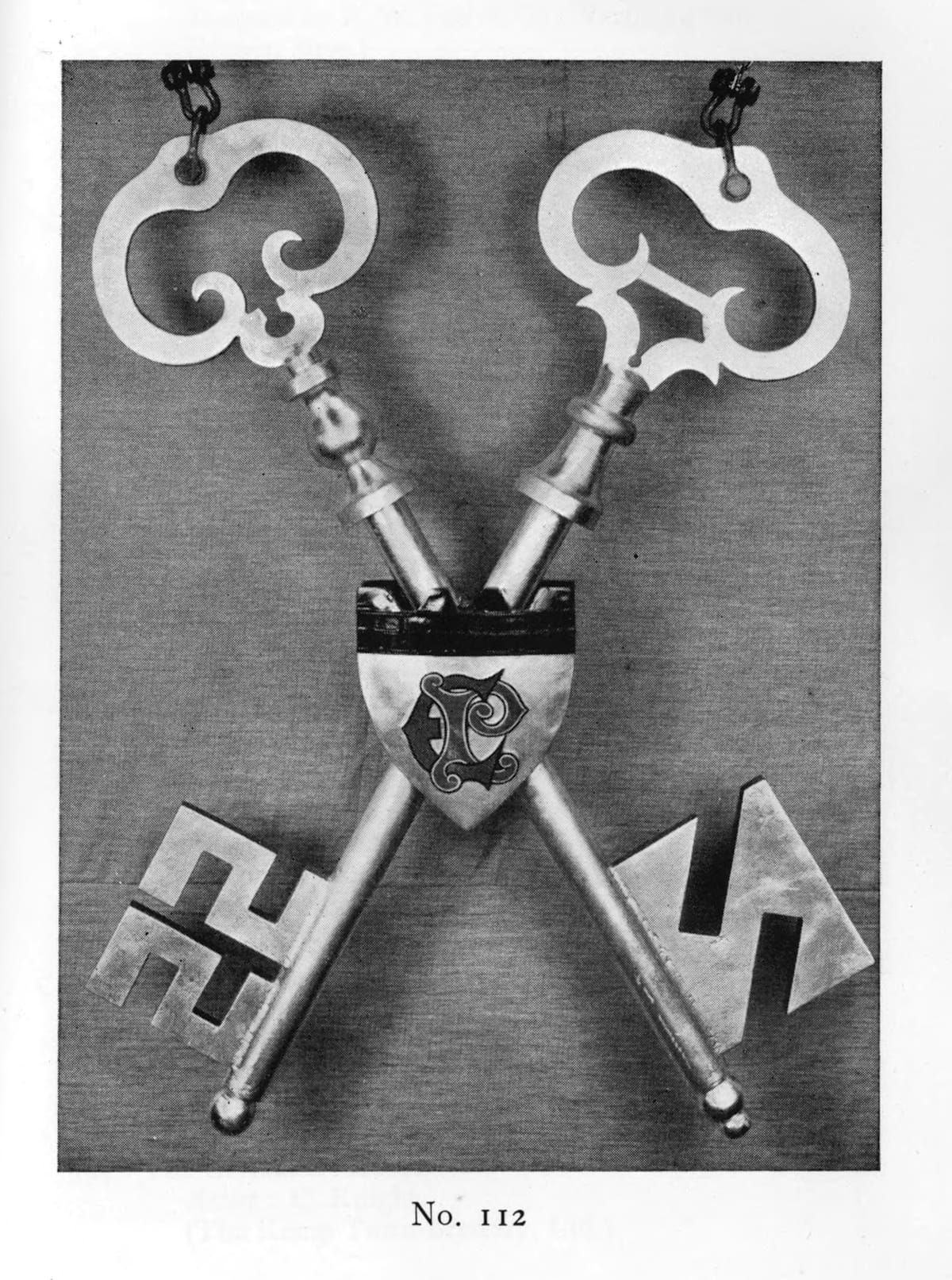 112. The Cross Keys, Sherborne, Dorset. Designed by J.B. Clark. Lent by Eldridge, Pope & Co., Ltd., Dorchester. The preface to the catalogue was written by Professor A.E. Richardson, and is transcribed below for posterity.
Preface: Inn Signs Exhibition CatalogueA sign, being the introduction to an inn, should attract by its appropriate character. Just as a comely façade hints at the rich comforts of private apartments, so the sign should convey to the traveller the amenities of an inn. The subject of signs has been favoured by generations of poets, writers and artists; it has enriched English literature besides forming the basis of decent advertising. It has been observed that ordinary people are familiar with the dainty quips, profound sentiments and political allusions of the myriad signs which embellish the inns of the English countryside. Neither do learned townsfolk despise ordinary announcements of hospitality couched in the language of the nursery. The truth is, everyone gathers amusement from a brightly painted sign, be it a representation of Henry the Eighth or the Cat and Custard Pot. You conclude that a sign should be a jovial impertinent sort of affair, eloquent of the broad humour of the English who continue to find something to laugh at. Therefore it is important that the design of the sign and its supports should be in no way inferior to the building it adorns. In the old days artists and craftsmen were sought after to make these ornamental contributions for the benefit of their fellow mortals. It was recognised that a good sign not only encouraged men to resort to a particular inn but kept them in good humour, and moreover, was frequently the subject of a toast. The object of the present exhibition is to promote further interest in this special branch of artistry and to prove that even the finest beverage is all the better for "Bush". In these days of intensive travel by road, when old inns are written up, and new ones are in process of building, the subject demands a new orientation. There is the widest scope for the artist, the journeyman sign painter, the blacksmith and the wood carver, neither should the skill of the artist architect be forgotten. No longer will the brewer tolerate a machine-made sign, while one badly composed, or showing faulty heraldry, is pounced upon by the discerning public and held up to scorn. The problem of designing an appropriate sign has now been transferred to the professional artist, who has recourse to the blacksmith for crowning scrolls and overthrows, and who relies on the carpenter for the selection of natural hard wood on which to paint the sign proper. Frequently the whole of the sign is made up of wrought iron, as for example at Thornham in Norfolk, where King John peeps through a lattice. The modern traveller, be he Hiker, Biker or Motorist, has come to regard the signs of inns and taverns as a minor National Gallery. All who frequent the King’s highway to-day are persons of taste in more senses than one. There is a growing dislike of signs which affect either snobbery or insipid drollery. Your true connoisseur now asks for bold limning as well as for more delicate touches. We dread those essays in Olde Englyshe which some spark invented for the beguilement of the unknowing. Who has taken the trouble to jot them down to form a scathing anthology? What a theme it would make for Sir John Squire or Mr. Belloc. But even such lapses into a language unheard at Stratford-atte-Bowe, count as nought by comparison with those enamelled signs which are supposed to be proof against water. Once again, if the main purpose of this unique—and let it be hoped—opportune exhibition is achieved, the inn signs of the future will represent the natural feelings of every walk of society, There is opportunity to record national reactions to great events, political and historical, satirical and profound. While sympathetic to the great hierarchy of old signs, the promoters of the exhibition are primarily concerned with the works of contemporary artists and craftsmen. The inn sign is in a category of its own. There are no rules and no machinery for its production. It may have much in common with the design of posters, but it certainly has nothing in common with those fantastic essays of the studio which are arty and crafty or merely modernistic. Neither can the products of ordinary commercial enterprise be entertained in competition with the rare and individual works of artists. The forceful simplicity of the theme, the pleasant graceful form of the sign itself, the beauty of the lettering, no less than the quality of the workmanship, are criteria of excellence. Further, all such works should be signed and dated clearly and legibly. A new profession is about to be opened for talented men and women. Signs will be produced that are neither cryptic of meaning nor dull of drawing. In such ways the new will form from the old.
The full catalogue can be downloaded here. Tally-Ho!To finish off, here are three more signs from the Inn Signs Exhibition. These were published in an article about the show in the Illustrated Sporting and Dramatic News. Two Tally-Hos, from Eastbourne and Finchley respectively, and a sign designed by Edward Reed for the Angler's Arms in Weldon Bridge, Northumberland. Further ReadingIn addition to the Inn Sign Society Journal, here are some books of interest to those wanting to learn more about the tradition of English inn/pub signs. - All About Pub Signs (2010) by Dorothy Nicolle
- British Inn Signs and Their Stories (1985) by Eric R. Delderfield [available here at archive.org]
- English Inn Signs (1951) by John Larwood and John Camden Hotten [available here at archive.org]
- The English Pub (1985) by Andy Whipple & Rob Anderson
- The Grand Exhibition of the Pre-Vinylite Society: An 18th Century Revival (2018) by Meredith Kasabian [available here at issuu]
- In-Signia (1948) by Whitbread & Co.
- Sign Boards of Old London Shops (1972) by Ambrose Heal [available here at archive.org]
- Signwritten Art (2005) by A.J. Lewery [available here in the BLAG Shop and here at archive.org]
- Stanley Chew's Pub Signs (1993) by John Martin
More HistoryMore Events
|
